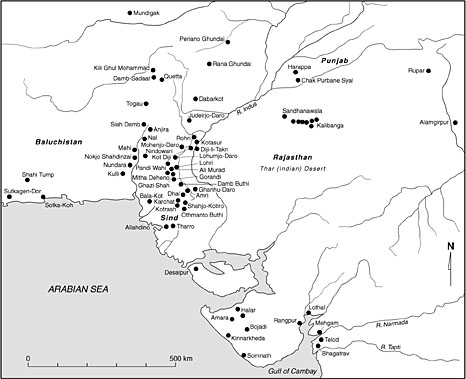

 | Page 655 |  |

Indus Valley Civilization Archaeological Sites
The first and most significant statement about the Indus civilization during this period was made by Marshall (Marshall, ed. 1931). First, the civilization was roughly contemporary with the Sumerian antiquities of mesopotamia and as distinctive of the Indus as the civilization of the Pharaohs was distinctive of the Nile. Second, the civilization had deep roots in the soil. Third, it showed the earliest evidence of grid planning in the world, although in detail its civic planning was reminiscent of the austere character of British industrial cities. Fourth, in many ways, especially crafts, religion, and sculpture, this civilization preempted many features of the historic civilization of India. From this point of view, Hinduism was the oldest living faith in the world. Fifth, the civilization was pre- and non-Vedic in its relationship with the “Vedic period,” which was the starting point of ancient India until this civilization was discovered. As far as the last hypothesis is concerned, Marshall depended on the opinion of one of his own survey officers, R.P. Chanda (1926, 1929), who went to the extent of arguing that the civilization was destroyed by Aryan invasions, thus preempting what Wheeler (1947) wrote much later.
Further, Mohenjo Daro was supposed to have had three main periods: early, intermediate, and late. The early levels could not be fully excavated, but the buildings on the western mound at Mohenjo Daro were found to have stood on an artificial platform of the early intermediate period. It was also found that the city as a whole suffered a marked decline in civic standards during the late period. On the basis of his work at Amri, Ghazi Shah, Pandi Wahi, Jhukar, and Lohumjodaro in Sind, Majumdar (1934) postulated early, later, and late phases for the civilization as a whole.